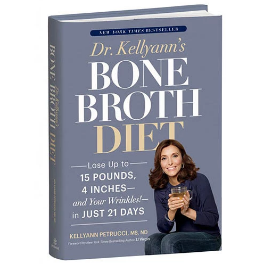
Low Carb vs Keto: What’s The Difference?
As the pursuit of optimal health and wellness gains momentum, the low-carb and keto diets have emerged as frontrunners in the quest for effective dietary strategies. Both approaches promise benefits ranging from weight loss to improved metabolic health, yet they differ significantly in their principles and execution. For those navigating the complexities of dietary choices, understanding the distinctions between low-carb and keto is crucial. This article delves into the core differences, offering insights to help you determine which path aligns best with your health goals and lifestyle.
What Is a Low-Carb Diet?
A low-carb diet is a nutritional approach that emphasizes reducing carbohydrate intake while increasing the consumption of proteins and healthy fats. This dietary strategy aims to lower the body's reliance on glucose as a primary energy source, encouraging it to burn stored fat instead. By limiting foods high in sugars and starches, such as bread, pasta, and sugary snacks, individuals can experience benefits like weight loss, improved blood sugar control, and enhanced metabolic health. Low-carb diets are versatile, allowing for a range of carbohydrate restrictions based on individual goals and preferences, making them accessible for those seeking to improve their overall health and well-being.
What Is a Keto Diet?
A keto diet, short for ketogenic diet, is a high-fat, low-carbohydrate eating plan designed to shift the body's metabolism from relying on glucose to utilizing ketones as a primary energy source. By drastically reducing carbohydrate intake, typically to less than 50 grams per day, the body enters a state of ketosis, where it efficiently burns fat for fuel. This metabolic shift can lead to significant weight loss, improved insulin sensitivity, and enhanced mental clarity. The keto diet emphasizes foods rich in healthy fats, such as avocados, nuts, and oils, while minimizing carbohydrates found in grains, fruits, and sugars, making it a powerful tool for those seeking to optimize their metabolic health and energy levels.
Low-Carb vs Keto: What’s The Difference?
Carbohydrate Intake
- Low Carb Diet: Typically involves reducing carbohydrate intake to around 50-150 grams per day, allowing for a more flexible range of foods.
- Keto Diet: Requires a more stringent restriction, usually limiting carbs to less than 50 grams per day to induce ketosis.
Primary Energy Source
- Low Carb Diet: Focuses on reducing carbs but does not necessarily shift the body into ketosis; energy comes from a mix of fats and proteins.
- Keto Diet: Aims to switch the body's primary energy source from glucose to ketones, achieved through a high-fat, low-carb regimen.
Macronutrient Composition
- Low Carb Diet: Offers a balanced approach with moderate protein and higher fat intake, but not as high as keto.
- Keto Diet: Emphasizes a high-fat intake, typically 70-80% of daily calories, with moderate protein and very low carbs.
Health Benefits
- Low Carb Diet: Can aid in weight loss, improve blood sugar control, and enhance metabolic health without the strictness of keto.
- Keto Diet: Known for rapid weight loss, improved insulin sensitivity, and potential cognitive benefits due to ketosis.
Flexibility and Sustainability
- Low Carb Diet: Generally more flexible and easier to maintain long-term, accommodating a wider variety of foods.
- Keto Diet: Requires strict adherence to maintain ketosis, which can be challenging for some individuals over time.
Suitability
- Low Carb Diet: Ideal for those seeking moderate carb reduction without the need for ketosis.
- Keto Diet: Best suited for individuals who want to achieve and maintain ketosis for specific health goals.
Can You Still Achieve Ketosis On a Low-Carb Diet?
Achieving ketosis on a low-carb diet is possible, but it largely depends on the individual's carbohydrate intake and metabolic response. While a standard low-carb diet reduces carbohydrate consumption, it may not be low enough to consistently induce ketosis, which typically requires limiting carbs to around 20-50 grams per day. However, some individuals with naturally higher metabolic flexibility may enter ketosis even on a less restrictive low-carb diet. Factors such as physical activity, overall diet composition, and individual metabolic rate play crucial roles in determining whether ketosis can be achieved. For those specifically aiming for ketosis, a more structured ketogenic approach is generally recommended to ensure the body consistently uses fat as its primary energy source.
Is Weight Loss More Effective With a Keto Diet or Low-Carb Diet?
The effectiveness of weight loss on a keto diet versus a low-carb diet can vary based on individual metabolic responses and lifestyle factors. The keto diet often leads to more rapid initial weight loss due to the body's shift into ketosis, where it burns fat for fuel, and the associated reduction in water weight. This can be particularly motivating for those seeking quick results. However, a low-carb diet, which is less restrictive, may be more sustainable for long-term weight management, allowing for a broader range of foods and easier adherence. Ultimately, the best choice depends on personal preferences, health goals, and the ability to maintain the dietary changes over time. Both diets can be effective, but the key to success lies in finding a balance that aligns with one's lifestyle and nutritional needs.
How Many Calories Should I Have on Ketogenic Diet vs Low-Carb Diet?
The number of calories you should consume on a ketogenic or low-carb diet depends on various factors, including your age, gender, activity level, and specific health goals. Generally, both diets prioritize macronutrient composition over calorie counting. On a ketogenic diet, the focus is on maintaining a high-fat intake (about 70-80% of total calories), moderate protein, and very low carbohydrates, which can naturally lead to a reduction in overall calorie intake due to increased satiety from fats. In contrast, a low-carb diet offers more flexibility with carbohydrate intake, typically ranging from 50-150 grams per day, allowing for a broader range of foods and calorie levels. It's essential to listen to your body's hunger cues and adjust your intake to support your energy needs and weight management goals, rather than adhering to a strict calorie count. Consulting with a healthcare professional or nutritionist can provide personalized guidance tailored to your individual needs.
The Do's and Don'ts Of Low-Carb and Keto Diets
Do's of Low-Carb Diets
- Incorporate a Variety of Vegetables: Emphasize non-starchy vegetables like leafy greens, broccoli, and peppers to ensure you receive essential vitamins and minerals while keeping carb intake low.
- Choose Healthy Fats: Opt for sources of healthy fats such as avocados, nuts, seeds, and olive oil to support heart health and provide sustained energy.
- Plan Your Meals: Prepare meals in advance to avoid high-carb temptations and ensure you have balanced, low-carb options readily available.
Don'ts of Low-Carb Diets
- Avoid Processed Low-Carb Foods: Steer clear of packaged foods labeled as "low-carb" that may contain unhealthy additives and artificial ingredients.
- Don't Neglect Fiber: Ensure adequate fiber intake by including fiber-rich foods like chia seeds and flaxseeds to support digestive health.
- Don't Overconsume Protein: While protein is important, excessive intake can lead to gluconeogenesis, where protein is converted into glucose, potentially hindering your low-carb goals.
Do's of Keto Diets
- Track Your Ketone Levels: Use tools like ketone strips or meters to monitor your ketone levels and ensure you're maintaining ketosis.
- Prioritize Electrolyte Balance: Increase intake of electrolytes such as sodium, potassium, and magnesium to prevent common keto side effects like fatigue and muscle cramps.
- Include High-Quality Fats: Focus on high-quality fats like coconut oil, grass-fed butter, and fatty fish to support ketosis and overall health.
Don'ts of Keto Diets
- Don't Skimp on Vegetables: Even on keto, include low-carb vegetables to provide essential nutrients and fiber, supporting overall health.
- Avoid Hidden Carbs: Be vigilant about hidden carbs in sauces, dressings, and processed foods that can inadvertently increase your carb intake.
- Don't Ignore Your Body's Signals: Pay attention to how your body responds to the diet and adjust as needed, ensuring you maintain energy levels and overall well-being.
Conclusion
In conclusion, choosing between a low-carb and a keto diet ultimately depends on your personal health goals, lifestyle, and metabolic needs. Both dietary approaches offer unique benefits, from weight loss and improved metabolic health to enhanced energy levels and cognitive function. While the keto diet provides a more structured path to achieving ketosis and rapid results, a low-carb diet offers greater flexibility and sustainability for long-term adherence. By understanding the key differences and aligning them with your individual preferences and objectives, you can embark on a dietary journey that not only supports your well-being but also empowers you to achieve lasting health and vitality.
Final Thoughts
Seeking a delicious way to complement your low-carb or keto lifestyle? Dr. Kellyann's premium bone broths, available in chicken, beef, and French onion varieties, are a perfect choice. These broths are rich in collagen, non-GMO, and sugar-free, making them ideal for fasting and promoting recovery. Explore Dr. Kellyann's extensive selection of wellness products to support your journey towards optimal health and vitality.
Sources









